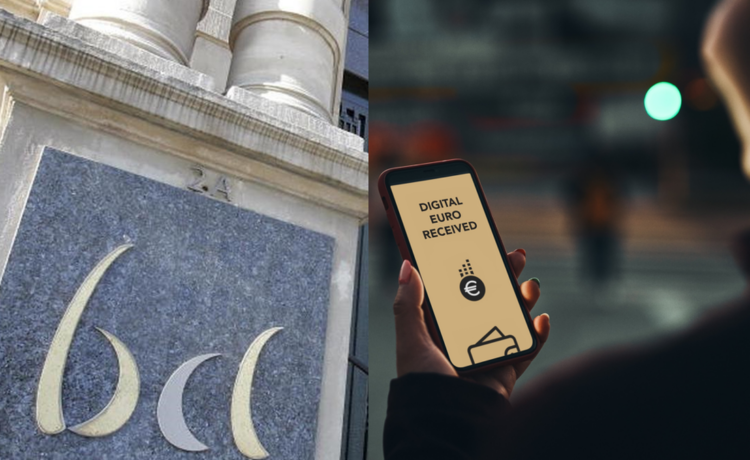The digital euro, still just in the planning stage, has recently been the target of a wave of misinformation and criticism across Europe, with Luxembourg’s central bank standing by the project to offer a digital payment solution based on central bank money.
At the heart of the backlash are statements made by the president of the European Central Bank (ECB), Christine Lagarde, which were misinterpreted by several social media commentators.
On 6 March, Lagarde mentioned the long-standing digital euro project during a question-and-answer session with the press on monetary policy.
The digital euro, if adopted, would be an electronic form of cash, a means of payment that could be used and accepted by consumers, businesses and public authorities. It would be issued by the European Central Bank, just like currency, and could be used for all purchases in the eurozone. And all at no cost to users.
Advantages of digital euro
-
Unlike cryptocurrencies, a digital euro would still be a euro, with exactly the same value as a one-euro coin.
-
There would not necessarily be any need for an internet connection, and purchases could even be made offline, which should guarantee a level of confidentiality comparable to cash.
-
Even if the digital euro were used online, it would not be possible to identify individuals from their payments.
-
The digital euro would be usable in all shops and at all retailers in the euro zone who accept it.
“We started working on the digital euro way back, actually when I started my term five and a half years ago,” stated Lagarde. “I am not claiming parentality on the digital euro because my colleague Benoit Coeuré had already committed a speech on this matter before I arrived, but I certainly carried on with that project.”
Currently, Piero Cipollone, a member of the ECB’s executive board, has been “focused on accelerating the pace” since 2023, so that all the stakeholders – including the European Parliament, European Council and European Commission – can “put to reality this digital euro.”
First deadline: October 2025
“The deadline for us is going to be October 2025 and we are getting ready for that deadline,” Lagarde said in the Q&A session. “But we will not be able to move unless the [stakeholders] actually complete the legislative process, without which we will not be able to move.” That was all it took for speculation on social networks about its launch to run wild.
However, the ECB president was talking about a preparatory phase of the project, and not about the launch itself. Moreover, its potential launch remains unlikely to happen before 2027 or 2028, according to officials interviewed by the AFP news agency.
“I think it is critically important, and for the agnostics or the sceptics, it now seems more relevant and more imperative than ever before, both on the wholesale and on the retail level,” Lagarde told the press.
The Luxembourg Central Bank (BCL) fully agrees with this statement. The institution is a stakeholder in the project, as are all the national central banks in the eurozone.
The digital euro would exist alongside physical banknotes, which will be maintained, in order to preserve freedom of choice when it comes to payment.
Luxembourg Central Bank spokesperson
“In an increasingly digital world, it makes sense, in the long term, to offer a digital payment solution based on central bank public money,” the BCL stated in response to a request for comment. “The digital euro would exist alongside physical banknotes, which will be maintained, in order to preserve freedom of choice when it comes to payment.”
This assertion puts paid to the flurry of statements published on social networks, such as that of Nicolas Dupont-Aignan, president of the far-right party Debout la France, who denounced on X a “folly for our freedoms”. A simple visit to YouTube with the keyword digital euro reveals a plethora of conspiracy theories.
Some claim that the euro will be used for mass surveillance, eliminating cash and to allow the EU to seize individuals’ financial assets. This misinformation reveals a “mistrust of centralised institutions”, said Vicky Van Eyck, executive director of the NGO Positive Money Europe, in the AFP report.
“A decision by the ECB Governing Council on whether or not to issue the digital euro will only be taken on the basis of a solid legal framework resulting from a European democratic process,” the BCL stated.
Interest in digital euro less than 50%
“Luxembourg residents are increasingly using digital means of payment via bankcards or mobile applications, and less so banknotes,” the BCL said.
This finding is in line with the ECB’s “Space” survey, based on data from 2023, which shows that “only 13% of respondents say they prefer to use banknotes for in-store payments, a figure that is down on 2022.”
We are convinced that the arrival of the digital euro would be in line with residents’ consumption habits.
Luxembourg Central Bank (BCL)
“On this basis, we are convinced that the arrival of the digital euro would be in line with residents’ consumer habits,” said the BCL. “As a pan-European means of payment by the euro system, it would be particularly useful for Luxembourg residents because of their lifestyle and their often transnational consumption habits.”
According to a more recent ECB report, awareness of the digital euro rose from 18% to 40% among eurozone respondents between 2022 and 2024. These figures seem encouraging, but they are offset by the potential willingness to use it, which remains below 50%.
The survey results suggest that robust communication will be essential to ensure its effective implementation, given the current climate of mistrust towards European institutions.
(This article was originally published by Virgule. Translation and editing by Aaron Grunwald)
















